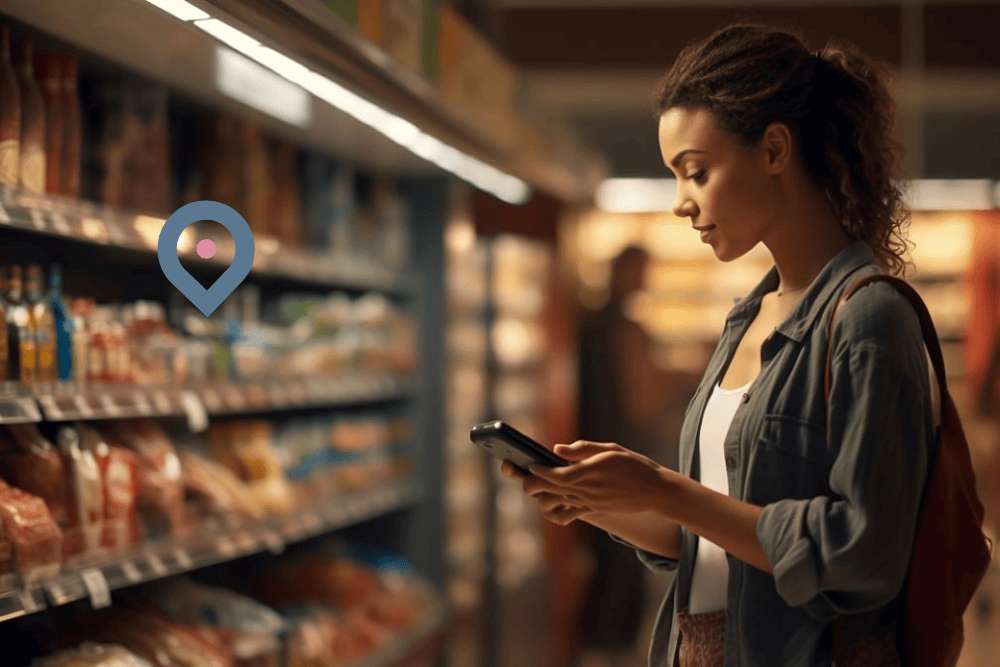
When it comes to navigating indoors, traditional GPS falls short as it is neither precise enough nor works properly within buildings. Whether in sprawling shopping malls, parking garages, large warehouses, or complex office buildings, knowing your precise location to find your preferred shop, asset or car indoors can be a challenge. The required UWB infrastructure and handling effort is relatively small, keeping the investments at a reasonable level.
Ultra-wideband (UWB) solves these issues due to its unique properties:
- High Accuracy: UWB pinpoints location within centimeters, making it ideal for places where precision matters, such as hospitals or precise manufacturing.
- Low Interference: UWB operates across a wide frequency range in a wide GHz spectrum at low power density, reducing the risk of interference from other devices, such as multipath effects.
- Power Efficiency: UWB uses less energy than other technologies thanks to a short uptime and while working hand in hand with other technologies such as BLE and NFC, making it perfect for small, battery-powered devices like wearables.
- Security: UWB has several built-in security measures such as Scrambled Time Sequence (STS) which works hand-in-hand with a Secure Element, thus it can be perfectly embedded into a system such as untracked navigation, to enhance a user's privacy.
These features make UWB a leading technology for indoor positioning systems (IPS) across industries like retail, healthcare, transportation, and manufacturing.
How UWB is Transforming Indoor Positioning Systems
Indoor spaces are typically more complex than outdoor environments, with many obstacles that block or reflect signals. UWB can overcome these challenges because of its unique features:
- Improved Indoor Navigation
One of UWB’s standout features is its precision. In large spaces such as airports, malls, parking structures, and office buildings, UWB can guide people to specific locations like the right shelf in a store or the fastest lane in an airport with untracked indoor navigation. This precision is also useful for accessibility, helping individuals with disabilities navigate complex spaces or more easily manage their own homes.
- Asset Tracking in Manufacturing
In large warehouses or manufacturing plants, UWB is used to track assets in real time. Forklifts, pallets, and machinery parts can be monitored with high accuracy, leading to improved efficiency and reduced losses from misplaced items. UWB helps companies gain full visibility of their operations and streamline processes.
- Enhancing Safety and Security
UWB’s ability to track objects and people accurately enhances safety and security. In hospitals, UWB can help locate critical portable medical equipment, ensuring it's always where it’s needed. It can also monitor staff and patient movements in restricted areas, ensuring compliance with safety protocols.
- Seamless Smart Building Integration
UWB can seamlessly integrate with smart building systems. It allows for intelligent control of lighting, heating, and security systems based on the real-time location of building occupants. For instance, lights can turn on as someone enters a room and turn off when they leave, optimizing energy use. Learn more about FiRa’s use cases.
- Personalized Retail Experiences
Retailers are using UWB to create personalized shopping experiences. Stores can send tailored notifications about promotions or available products based on the customer’s location in the store. This enhances the shopping experience while providing retailers with valuable insights into consumer behavior. Learn more about smart retail.
- Contactless Tap-free Payment Systems
UWB is targeted to being used in secure, tap-free/contactless payment systems. With UWB-enabled smartphones or wearables, payments can be made simply by approaching a terminal. The system identifies the device supported by the use of a certified secure element, and processes the payment instantly with UWB’s precise range detection thus reducing the risk of accidental transactions. This also significantly enhances transport or car-related transactions such as toll collection or parking garage payments.
The Future of UWB in Indoor Positioning
UWB technology is evolving quickly, and its role in IPS is expanding across various industries. The FIRA® Consortium is working to establish technical and test specifications (functional and security) and promote UWB adoption and interoperability. With its ability to provide highly accurate, real-time location data, UWB is becoming a key player in sectors ranging from healthcare to retail.
As the technology matures, UWB-powered IPS will play an even larger role. The precision and reliability of UWB will drive innovations in indoor navigation and automation, reshaping how we interact with indoor spaces. As more sectors adopt UWB, it is poised to become the leading technology for indoor tracking and positioning.
For more insights into UWB and its applications, visit our blog at FIRA Consortium.